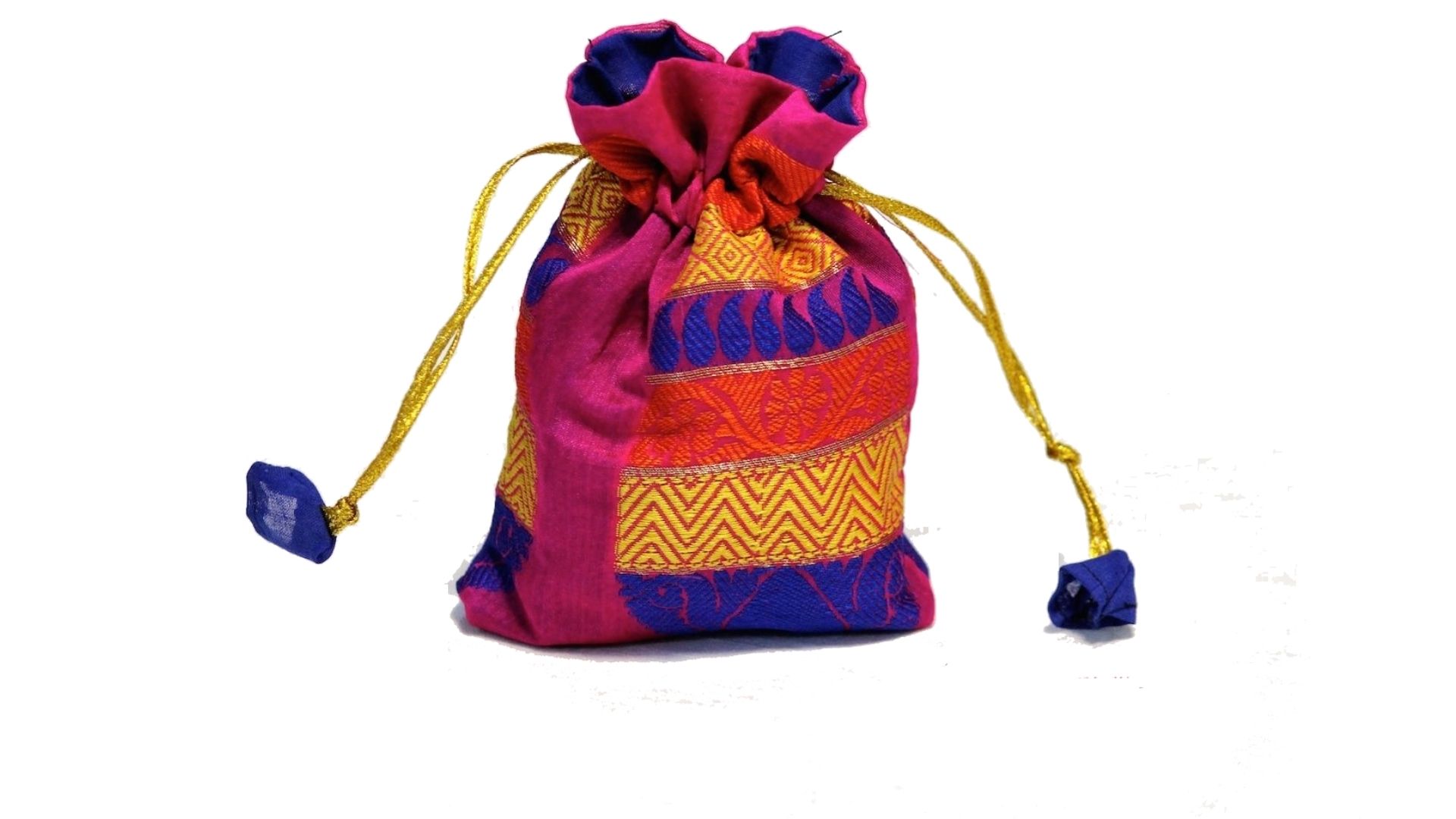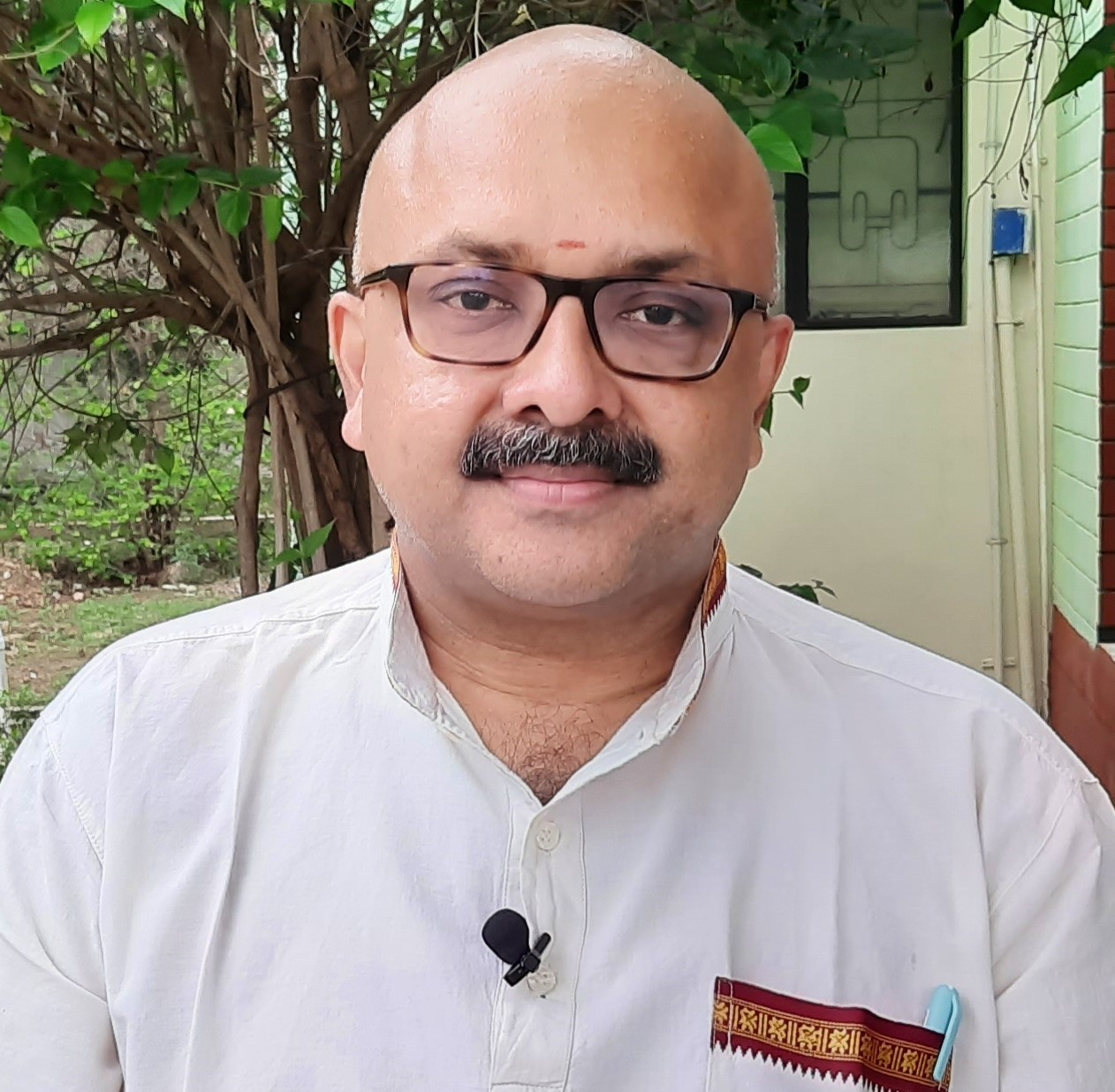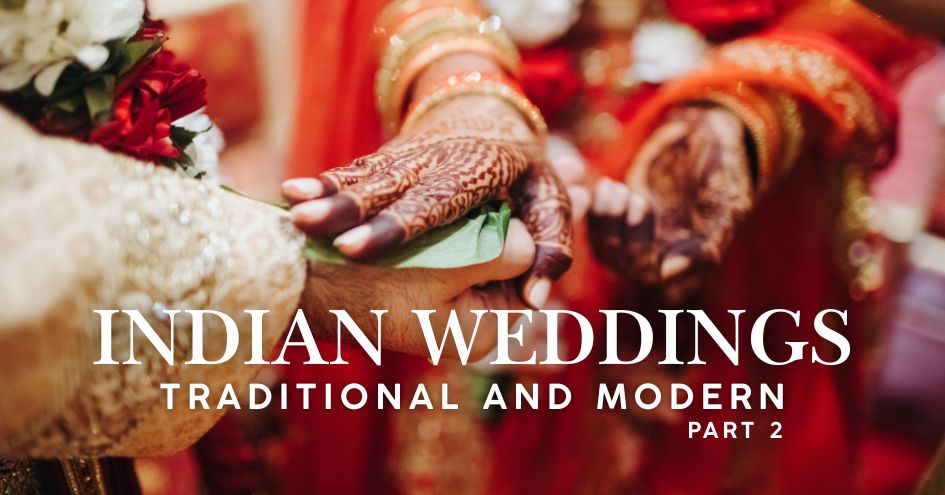Indians have always been known for their ingenious methods. They had always had clear cut solutions for themselves. India is a very old civilization. Indians have been the beacon light for the world for about 75,000 years. This country was also known for its functional aesthetics since time immemorial. Indian textiles made the country wealthy. The salubrious weather enabled farming, production of materials among other things.
The Surukkupai was among the interesting innovations .It was a stringed pouch made of cotton or silk. The pouch was inserted by women and men alike. It would store materials like cash, jewellery and keys. Women would carry betelnuts and easy to eat items like groundnut balls. Snuff boxes would also be kept in the Surukkupai. Priests and people of religion would carry vibhuti ( holy ash ), vermillion and sandalwood paste in the Surukkupai.

This flexible pouch would be attached to a rope or a strand. The rope or strand would be used to close the pouch. These pouches are soft and comfortable. One could place the pouch in between the body and fabric near the waist. The person could ride a horse or work or sleep with the pouch on himself or herself. Travelers would put all their ornaments within this pouch and sleep during the night hours. Spies and diplomats would carry the passes in their Surukkupais. This pouch would be made of thick fabric. Some of the Surukkupais would contain more than one compartment.
The compartments were designated for different purposes. They were purses or handbags of the bygone era. Women and men of today have taken to a number of items in the place of the Surukkupai. The purse with a zip, leather handbags, bags made of a combination of materials. Some of these bags are very expensive. They cost a fortune and leading brands market them. Models pose with these items. Some of the brands state that a part of the proceeds are used for charity. One more set of people state that the bags or purses are made without causing a strain to the environment.
Certificates and lab test reports accompany these products. People are convinced that the stuff used by them is made in a healthy manner. Such certificates and requirements were not required then. Most of the items were produced in an eco-friendly manner. The harm to the ecology was nil or minimum. The industrial revolution added to the prosperity of everyone, got everyone connected but it destroyed the environment. Man became the biggest polluter. The Surukkupai era was the time when pollution was the least.
Surukkupais used to be a carrier of sacred items too. People would carry small images of deities along with them. They were considered to be protectors. Well, each of the pouches were finely tailored by the locals. The weavers would make the fabrics and sell it to the pouch makers. These people would in turn cut the fabric in order to stitch the pouches. The work would be done in a meticulous manner. Some of the pouches would have an inner lining. A string or rope would be attached to the pouch. That would be used to close the pouch. Some pouches were made differently. One could just pull the string and make the opening smaller. Thereafter they would knot it up
A woman would always carry one Surukkupai. It was like the mobile phone of today. These pouches were part of the body and the contents would speak volumes about the owner. Once opened , the Surukkupai presented the truth. To put it simply it was like AR ( Augmented Reality ). It was of course used to augment the lifestyle of the individual. Our elders were known to be clear about hygiene and cleanliness. They used to empty the pouch of all its contents and wash it well. It would be sun dried and then put to use once again.
The Surukkupai was a symbol of freedom. It gave the person an opportunity to act independently. The nice pouch was a symbol of everything that was Indian. The Bharatiya Nari or the Bharatiya Penmani was complete with it.
Surukkupai was the symbol of a complete woman.
 Mr. Rajesh Govindarajulu is one of the founding members of The Verandah Club Pvt. Ltd. He is a leading columnist, historian, jeweler, entrepreneur, and a heritage enthusiast who is earnestly working to revive the past in the light of the present. Experiential learning about the history of Coimbatore is his main course of interest and he is also a panel member of many colleges in the city.
Mr. Rajesh Govindarajulu is one of the founding members of The Verandah Club Pvt. Ltd. He is a leading columnist, historian, jeweler, entrepreneur, and a heritage enthusiast who is earnestly working to revive the past in the light of the present. Experiential learning about the history of Coimbatore is his main course of interest and he is also a panel member of many colleges in the city.
NEXT ARTICLE

Over the past couple of years, I have had the opportunity to attend several family weddings, both in India and the United States. The experience has b...

Let's take a moment to revisit the meaning of the term “Vivāha”. At its core, it represents the idea of sharing a burden and carrying the weight of li...